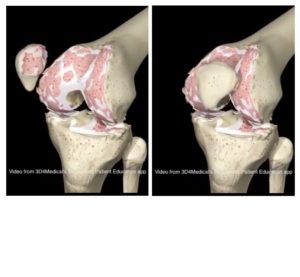Have you ever experienced a hamstring injury? It can be a painful and frustrating experience, especially if you are an athlete or enjoy physical activity. Fortunately, physiotherapy can help you recover from a hamstring injury and prevent future ones.
Hamstring injuries are common among athletes, especially those who participate in sports that involve running, jumping, and sudden stops and starts. These injuries can range from mild strains to severe tears. Hamstring injuries can also occur in non-athletes due to overuse, poor techniques, or muscle imbalances.
Physiotherapy is an effective way to rehabilitate a hamstring injury and prevent future ones. A physiotherapist can help you regain strength, flexibility, and range of motion in your hamstring muscles through a personalised treatment plan that may include exercises, stretches, and manual therapy.
With footy pre-season commencing, hamstring injuries become more prevalent, and it’s not just the older guys that are getting injuries!
Common risk factors for hamstring injuries
- Sports (contact sports, sprinting, jumping, AFL)
- Previous hamstring injury
- Previous knee injury
- Previous calf injury
- Muscle imbalances
- Poor biomechanics
- Abnormalities in the lumbar spine
- Muscle fatigue, muscle weakness and muscle stiffness
- Core instability
- Hip flexors that are too tight
- Age
Hamstring rehabilitation protocol
Too often, we see a very basic rehabilitation for hamstring injuries. This is linked to such a high recurrence rate. Each injury is different and requires an individualised program. A simple recipe is not going to keep you injury free!
At Enhance Physio, we adjust a modified program from the Australian Institute of Sport to benefit each case. A brief overview includes:
- Initial acute management following injury requires the RICE principles; Rest, Ice, Compression and Elevation to limit the bleeding and damage to surrounding tissues. You must keep good thigh compression and icing for the first 72 hours.
- Preparation for a running program. This will commence with a slow shuffle on the grass. Short steps are the key to not overstretching the hamstring muscle group too early.
- Structured strength and conditioning program.
- Progress through running the program, which includes 3 stages: acceleration, steady state and deceleration.
- Working on core and hip control to limit overuse of the hamstring.
How long does a hamstring injury take to heal?
It depends on the severity of your strain, but as an easy rule of thumb, most Grade 1-2 strains will recover in 3 weeks with optimal rehab. Unfortunately, Grade 3 hamstring tendon injuries can require up to 8 weeks or more, depending on where precisely you are injured. While this is not always accurate for everyone’s individual situation, it’s best practice to seek professional medical guidance following any muscle tear or strain.

Long-term consequences of hamstring injuries
Most hamstring muscle strains heal in up to eight weeks if treated appropriately. However, some injuries do have long-term consequences. This is usually the case if the injury’s initial management is inadequate or the muscle damage is severe.
When the hamstring muscle is severely torn, several structures in and around the muscle can be injured, further delaying recovery.
Poor hamstring injury management can result in a tight or weakened hamstring muscle group prone to reinjury when returning to activity.
Expert tips to avoid hamstring injuries
Is there an approach to avoid or at least limit your risk of developing a hamstring injury? Thankfully, the answer may be yes. Studies reveal that individuals who sustain strong hamstring strength (particularly eccentric strength) could decrease their susceptibility to straining their hamstrings.
Eccentric strength is when your muscle contracts while it lengthens. Though performing the Nordic eccentric hamstring exercise can be challenging, its potency has been proven to reduce the risk of hamstring strains in elite athletes significantly.
The ability to bound, jog and swiftly begin and stop may help develop the hamstrings muscles appropriately while playing sports. There is a likelihood of safeguarding one’s body through retaining suitable flexibility, control over the surrounding muscles, and good agility regarding the hamstring muscle groups.
Protect yourself from hamstring strains, and consider incorporating exercises like the single-leg hop and drop jump drills into your agility training routine.
Work with your physiotherapist to determine which exercises are the ideal fit for you to lower your chances of suffering hamstring injuries.

Final thoughts on hamstring rehabilitation with physiotherapy
If you’re dealing with a hamstring injury, don’t let it sideline you for long. Physiotherapy can help you get back on your feet and back to doing what you love. With the right exercises and guidance from an experienced professional, you can strengthen your hamstrings, reduce pain, and prevent future injuries.
If you have sustained a hamstring injury or have a history of repetitive hamstring niggles, it’s time for a thorough assessment at Enhance Physiotherapy.





